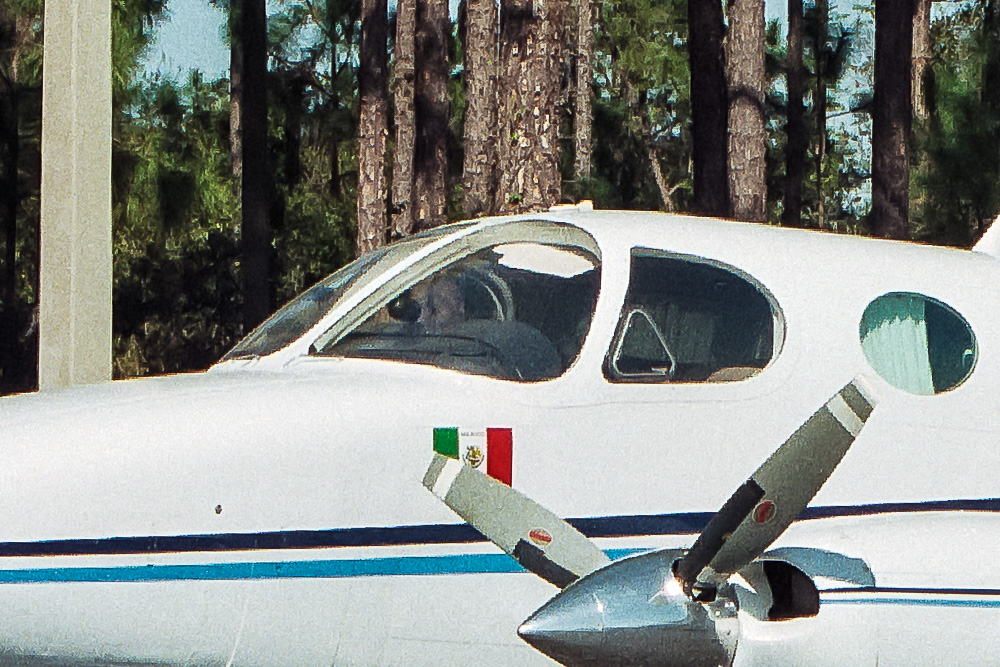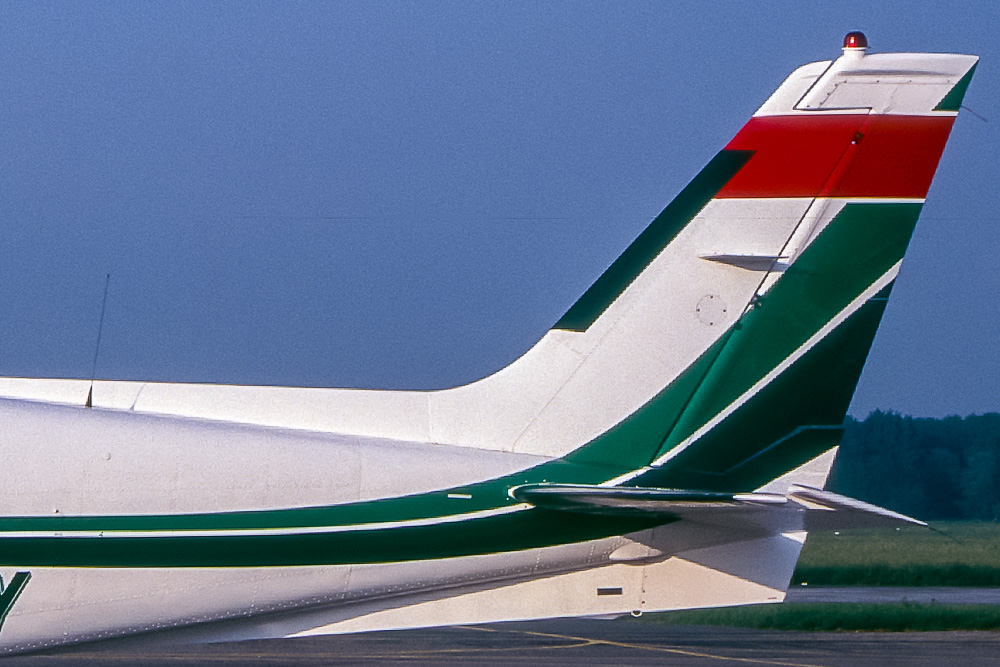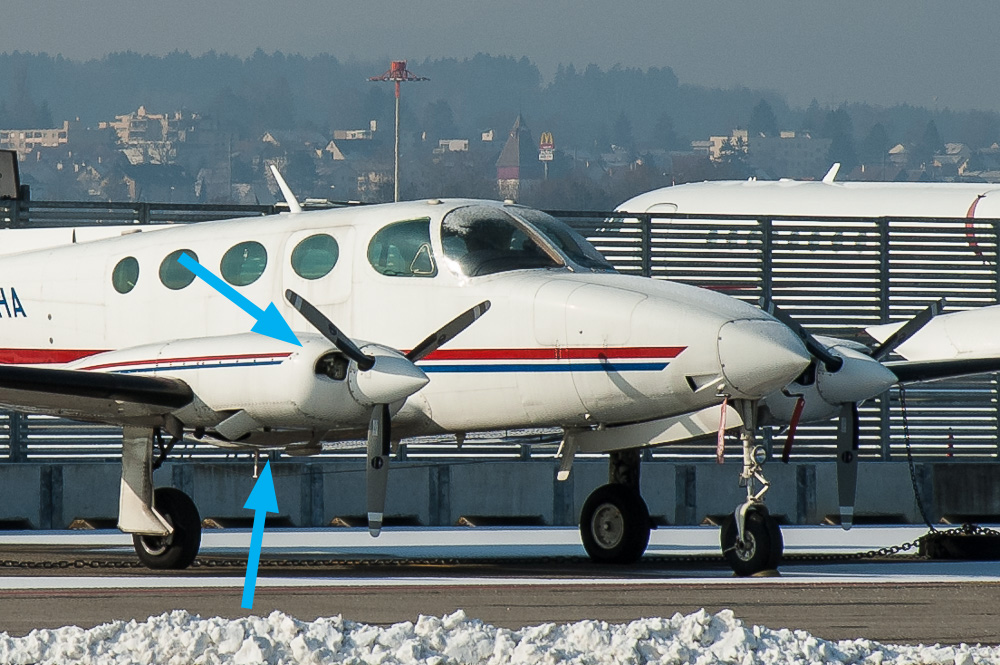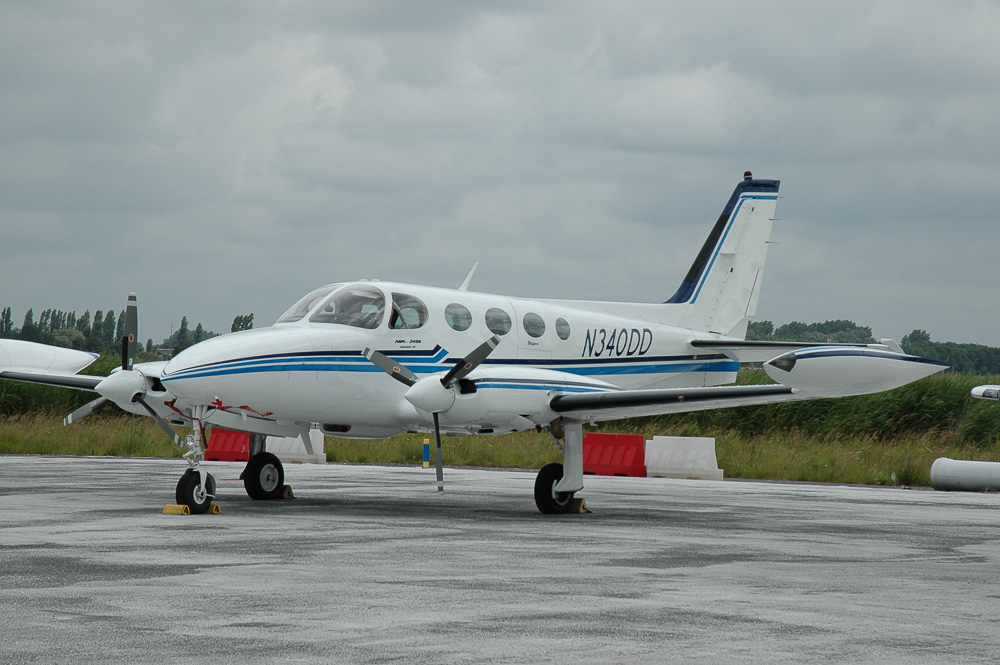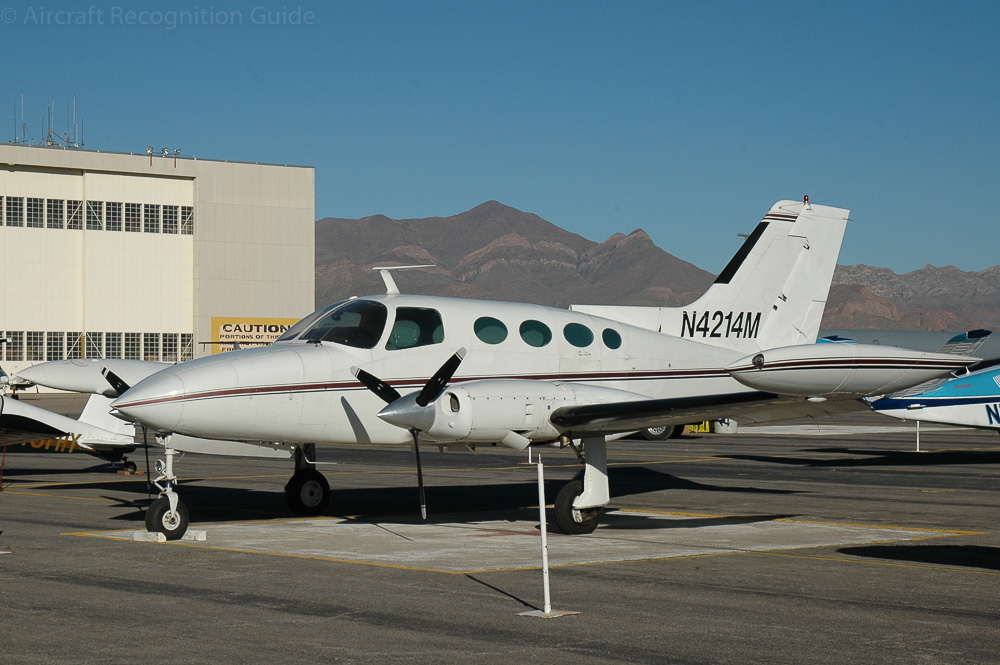
Cessna 335, 340 & 340A
Regarded as one of the best cabin class piston twins is the Cessna 340. It is about a mix between the Cessna 310 and Cessna 414, with a new fuselage. In appearance, it is quite similar to the Cessna 400 series. Like those aircraft it is a low wing, low horizontal stabiliser aircraft, with two engines in the wing leading edge. The single main landing gear retracts sidewards into the wings. The Cessna 340 has four oval cabin windows, of which the last two are smaller than the other two. Typical are the long D-shape cockpit side windows, which has a triangular inset on the left side, sometimes framed off. The aircraft also has tip tanks and a tall vertical stabiliser, with a long narrow dorsal fin and dito ventral fin.
Different versions
The different versions of the Cessna 340 series can be recognised by
- the shape of the engine nacelles
- the presence of vortex generators on the wings
- the number of ventral fins
Cessna 335, 340 & 340A
These are all original Cessna models. It started with the Cessna 340. It has non-geared piston engines. The nacelles have (rounded) rectangular cooling intakes at the sides of the prop spinner. The 340A was an uprated version, with nearly the same engines. It is supposed to have three blade props with a 20 cm smaller diameter than the 340, but this would be difficult to distinguish anyway. The 340A came in two internally updated subversions, the 340A II and 340A III. Finally, the Cessna 335 is a non-pressurised version of the 340, but externally the same. The 340 and 340A can be modified with four blade propellers, and to one of the upgrades below.
RAM Series IV, VI & VII
To further improve the performance of the Cessna 340 & 340A, RAM Aircraft offers the Series IV, VI and VII upgrades. Most prominent are modifications to the engines, with the IV, VI and VII being different adjustments resulting in different performance. All have an additional cooling intake at the bottom of the nacelles. The standard intakes at the front are the same as the standard Cessna 340/340A. Additionally, they have a larger cooling intake at the bottom of the fuselage, in between the wings. Most modified aircraft also have vortex generators on top of the wings, near the leading edge.
The Cessna 340A RAM Series VI (and IV & VII) has a large cooling air intake at the bottom of the fuselage and a smaller one at the bottom of the nacelles.
Detail of the 340A nacelle after conversion by RAM Aircraft. The recognition point is the extra cooling intake at the bottom. Note the unchanged front intake.
Riley Jet Prop 340
The marketing name already reveals that this is a turboprop conversion of the Cessna 340. Indeed the Riley Jet Prop 340 has two LTP101 turbine engines. These have air intakes below the prop spinner and exhausts on either side of the nacelles.
The Riley Jet Prop 340 was the first turboprop conversion of the 340. These engines have exhausts on each side of the nacelle.
Riley Rocket 340 (R340L)
Riley does similar stuff as RAM Aircraft, replacing the or modifying the standard Cessna 340's engines. One conversion is the Riley Rocket 340, which can be recognised by the location of the front cooling air intakes. They are towards the bottom of the nacelles instead of the top.
Riley Super 340 (R340 Super)
This is another 340 conversion by Riley. The Super 340, also known as R340 Super, has nearly the same engines as the standard version, but with narrower cooling intakes at the front. They do have a similar intake at the bottom of the fuselage as the RAM modified aircraft.
The Riley Super 340 has narrower cooling intakes at the front of the nacelles, next to the prop spinner. They are nearly a rounded square. (photo Ronnie Macdonald/WikiMedia)
Silver Eagle 340
This is another turboprop conversion, but with Rolls-Royce (Allison) 250 engines. The key features of this Silver Eagle 340 are nacelles with double exhaust at the bottom of the nacelles, near the front, and two ventral fins.
The Silver Eagle 340 has two turboprop engines with double exhausts at the bottom of the nacelles. Also note the two ventral fins. (photo: Joop de Groot)
Confusion possible with
Cessna 401/402
The Cessna 340 is externally very similar to the Cessna 400 series twins, in particular the early model Cessna 401/402. You'd best look at the cockpit side window as that of the Cessna 340 has a round end, giving it a D shape. That of te 400 series is more rectangular. Also the vertical stabiliser is less slender.
Cessna 310/320

The Cessna 310 and 320 are the smaller siblings of the 340, with overall a similar appearance, apart from the larger, rectangular cabin windows.
Beech 60 Duke

The Beech Duke is a competitor of the Cessna 340, with higher performance. The main external differences are in the cabin windows (rounded rectangals) and main gear doors (triangular on the Duke). Finally, the Beech has no tip tanks, but may have winglets.
Beech Queen Air
The Beech Queen/King Air are somewhat bigger than the Cessna 340 series. The Beechcrafts however have round cabin windows, while those on the Cessnas are oval. Also the Beech has an additional triangular cockpit window, and has no tip tanks.
Piper PA-31 Navajo/Cheyenne
Piper's entry in the utility twin aircraft class is easily distinguished from the Cessna 340 series twins by the larger and rectangular cabin windows. The Navajo has no tip tanks, but rhe Cheyenne has.

